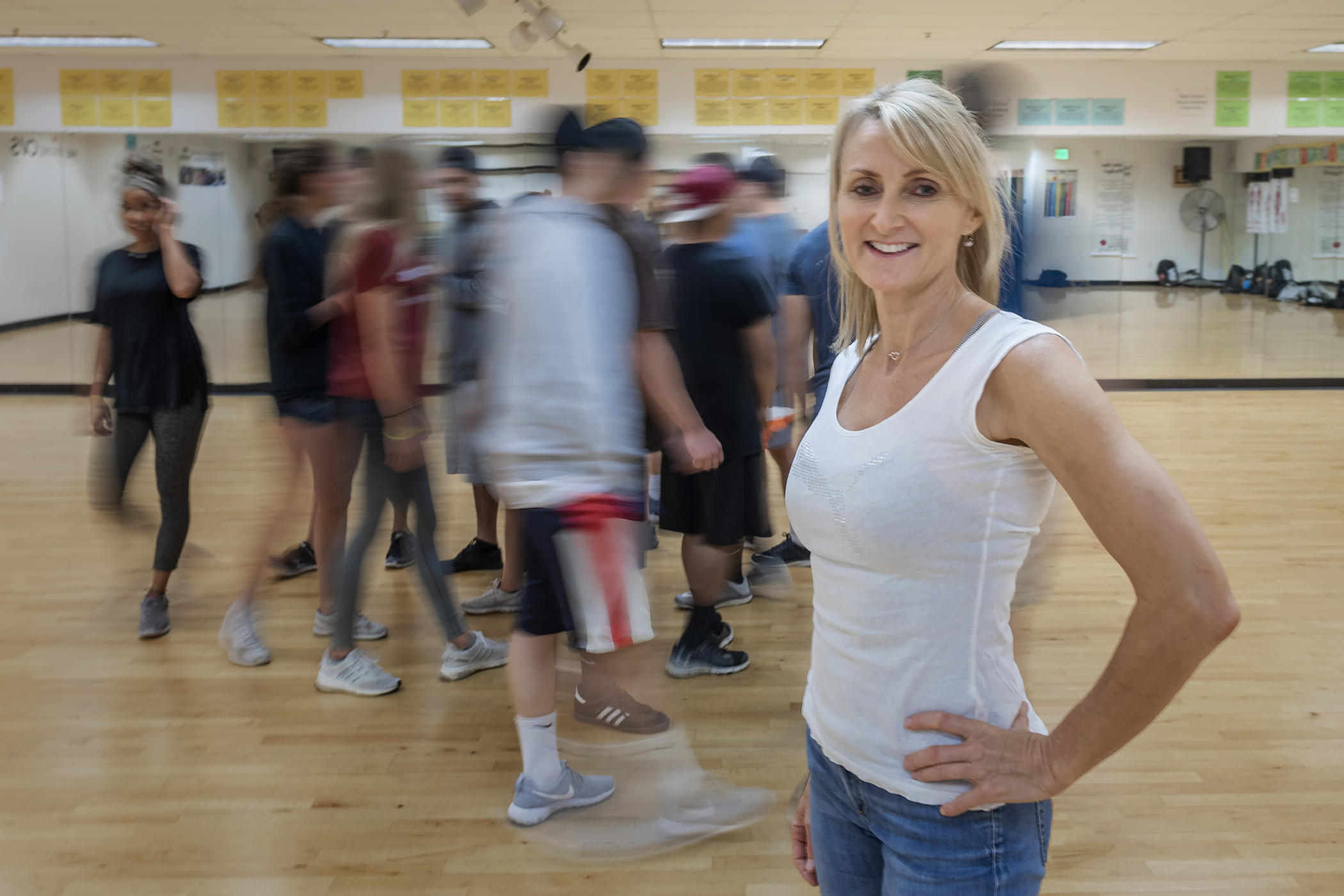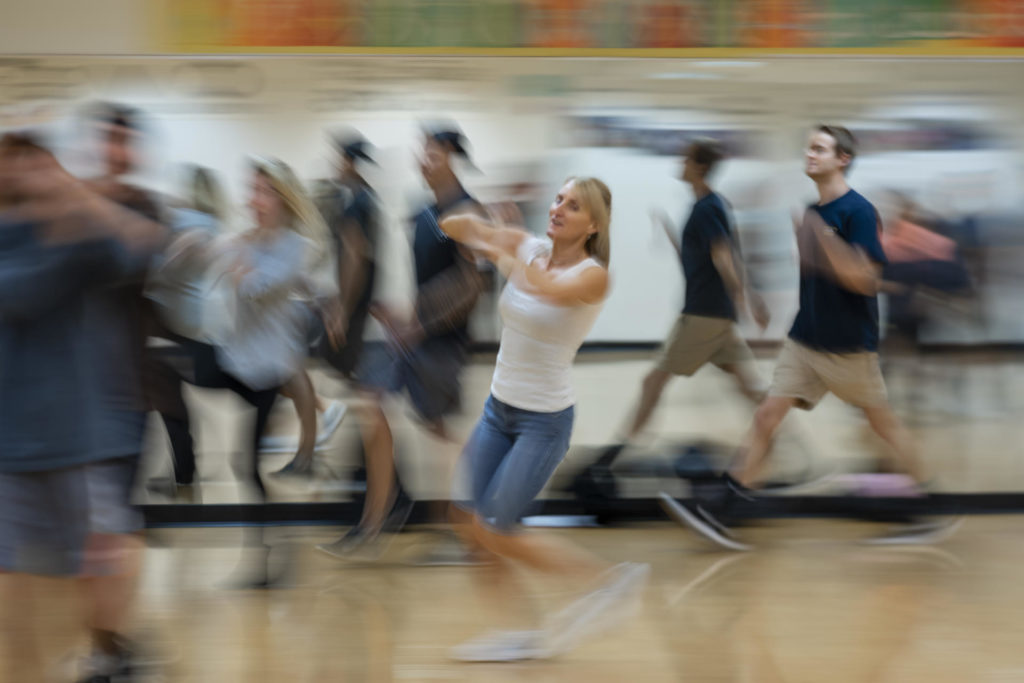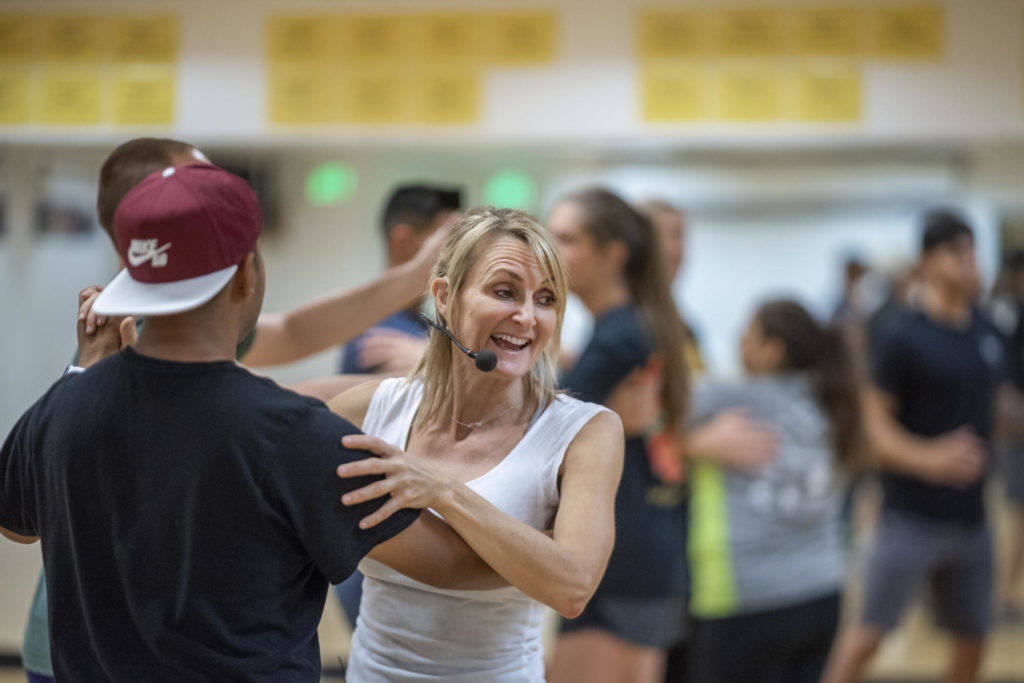How To: Go From Thinking About Exercise to Actually Doing It

Kinesiology professor Cathrine Himberg gets her students moving in her KINE 308S-01 Rhythms & Dance for Teachers class on Monday, October 8, 2018 in Chico, Calif. Himberg helps future physical education teachers commit to their role ensuring that all children graduate high school with the skills, knowledge, dispositions, and virtues to be physically active for life. (Jason Halley/University Photographer/CSU Chico)
Sometimes the gap between wanting to be physically active and actually doing it can feel as wide as the Grand Canyon. If you’re ready to make the leap and reap the many varied benefits to body and brain, kinesiology professor Cathrine Himberg offers some tips to help you make it happen.
Boost your knowledge and understanding
Most of us know how great physical activity is for the body, but do you understand its positive effects on your brain? Regular physical activity can help with cognitive function and learning, stress, anxiety, depression, hormone fluctuations, and symptoms of aging! Knowing the benefits can build your motivation to make permanent behavior changes.

Start where you are
It is easier to plan changes when you know your starting point. Self-assessments help you gauge your current level of fitness and can be as simple as checking how many steps you currently get each day, or how often you get the recommended 10,000 steps a day.
Set goals and plan wisely
Once you know your starting point, set a goal that is specific, measurable, attainable, realistic, has a timeline, and is challenging (SMART-C). For example, if you currently walk 5,000 steps per day, a realistic yet challenging goal can be to increase by 500 steps per day each week, until you reach 10,000 steps after 10 weeks.
Manage your time
Time is precious and most of us don’t have enough of it for all the things we want to do. But making room for regular physical activity in your life can save time in the long run. Do you have any “time wasters”—browsing social media or watching TV? Figure out where you can steal back 30 minutes a day to take care of your body and brain.

Choose activities that you enjoy
Want to stick with it? Make sure it’s something you enjoy. People who are active regularly usually enjoy what they do and have confidence in their abilities. Pick something you can do with friends or that just makes you smile!
Learn new skills
“Just do it!” is easy to say, but if you don’t have the skills, you probably won’t even try. It’s never too late, however, to learn new activities! Find out where you can learn new skills to help you get fit and that you can continue for life. Maybe it’s rock climbing, tennis, Spikeball, or West Coast Swing! You never know what you may like once you build some performance skills.
Himberg helps future physical education teachers commit to their role ensuring that all children graduate high school with the skills, knowledge, dispositions, and virtues needed to be physically active for life. Her 20-year-old website supportREALteachers.org is run by Kevin Shephard (Kinesiology, ’08; MA, Kinesiology, ’10), and reached 1 million visitors this year.
For more information on exercise promotion and adherence, visit supportREALteachers.org.


